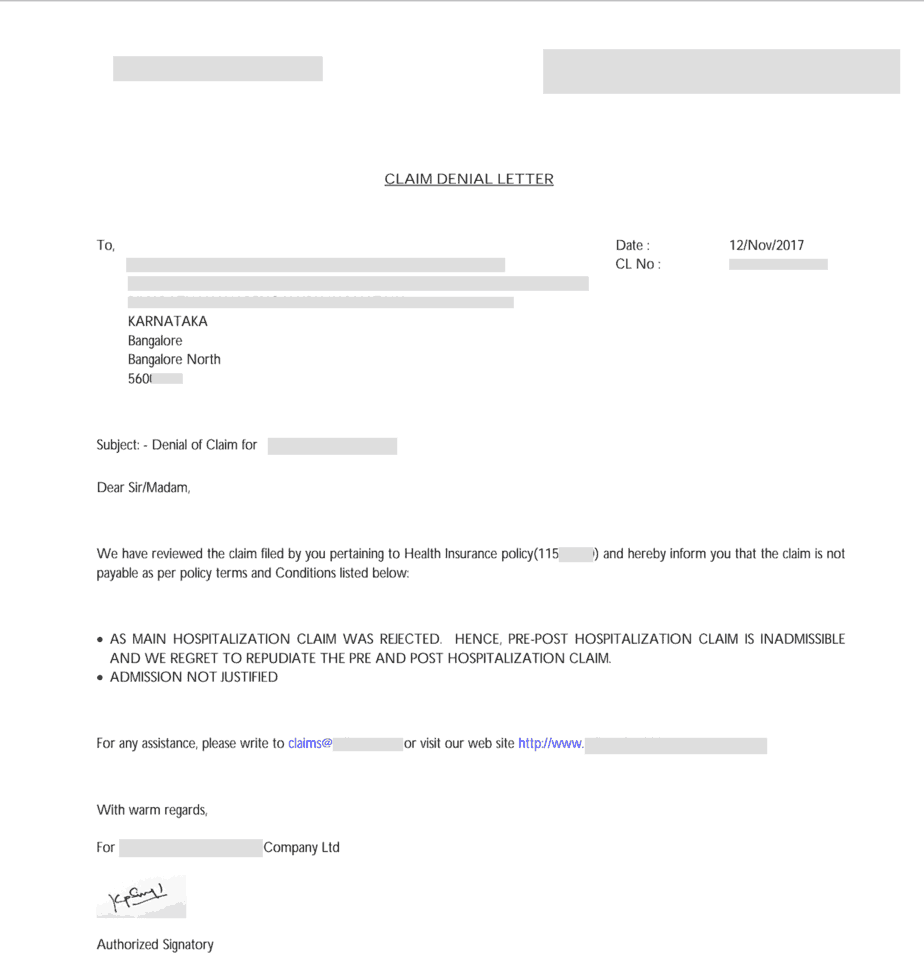Under M+C plans, patients receive medical services without additional out-of-pocket costs. Each person covered by a health insurance plan has a unique ID number that allows healthcare providers and their staff to verify coverage and arrange payment for services. It's also the number health insurers use to look up specific members and answer questions about claims and benefits. If you're the policyholder, the last two digits in your number might be 00, while others on the policy might have numbers ending in 01, 02, etc.
Group health insurance plans offer medical coverage to members of an organization or employees of a company. They may also provide supplemental health plans—such as dental, vision, and pharmacy—separately or as a bundle. Risk is spread across the insured population, which allows the insurer to charge low premiums. And members enjoy low-cost insurance, which protects them from unexpected costs arising from medical events. Some people who have Medi-Cal are in a Medi-Cal Managed Care plan. These plans have networks of providers, including doctors, pharmacies, clinics, labs, and hospitals.
Medi-Cal covers the basic benefitsthat all health plans cover. Medi-Cal also covers prescription drugs, vision care, and hearing care. If you see two numbers, the first is your cost when you see an in-network provider, and the second—usually higher—is your cost when you see an out-of-network provider. For example, when you're referred to a specific specialist or sent to a specific hospital, they may not be in your insurer's network. The most you have to pay for covered services in a plan year other.
After you spend this amount on deductibles, copays and coinsurance, your health plan pays 100 percent of the costs of covered benefits. For plans that cover more than 1 person, individual out-of-pocket maximums counts toward the family out-of-pocket maximum. Once the family out-of-pocket maximum is reached, the plan pays 100 percent of the cost of covered benefits for everyone on your plan. The out-of-pocket maximum doesn't include your monthly premium payments or anything you spend for services your plan doesn't cover. An insurance plan that has contracts with health care providers for discounted charges.
Typically, the plan offers significantly better benefits and lower costs to the patients for services received from preferred providers. If you do not see your coverage amounts and co-pays on your health insurance card, call your insurance company . Ask what your coverage amounts and co-pays are, and find out if you have different amounts and co-pays for different doctors and other health care providers. Many insurance cards list the specific amount that you are responsible for paying for the medical services you are receiving. A type of health plan that provides health care coverage to its members through a network of doctors, hospitals and other health care providers.
An HMO may cost less than other plans but has some limitations. A doctor, hospital, or other health care entity that is not part of an insurance plan's network. For medical services rendered by non-participating provider, the patient may be responsible for payment in full or higher costs.
This is usually the amount of your co-payment, or "co-pay." A co-pay is a set amount you pay for a certain type of care or medicine. Some health insurance plans do not have co-pays, but many do. If you see several dollar amounts, they might be for different types of care, such as office visits, specialty care, urgent care, and emergency room care. If you see 2 different amounts, you might have different co-pays for doctors in your insurance company's network and outside the network. The most you have to pay for covered services in a plan year.
The type of health coverage an individual needs to maintain throughout the year in order to meet the individual responsibility requirement under the Affordable Care Act. A cap on the total benefits you may get from your insurance company over the life of your plan for certain conditions. A health plan may have a total lifetime dollar limit on benefits (like a $1 million lifetime cap) or limits on specific benefits , or a combination of the two. After a lifetime limit is reached, the health plan will no longer pay for covered services. There are no lifetime limits on essential health benefits, such as emergency services and hospital stays.
Starting January 1, 2020, employers can offer their employees an individual coverage Health Reimbursement Arrangement instead of a traditional group health plan. This type of account may help reimburse qualifying health care expenses. As examples, these expenses could be monthly premiums and out-of-pocket costs, such as copays and deductibles. A group of doctors, hospitals, and other health care providers that have a contract with an insurance plan to provide services to its patients. Government-sponsored health plans continue to provide care to those left out of employer-sponsored group health insurance plans.
Group health insurance plans are purchased by companies and organizations and then offered to their members or employees. Plans can only be purchased by groups, which means individuals cannot purchase coverage through these plans. Plans usually require at least 70% participation in the plan to be valid. Because of the many differences—insurers, plan types, costs, and terms and conditions—between plans, no two are ever the same.
A member ID number and group number allow healthcare providers to verify your coverage and file insurance claims for health care services. It also helps UnitedHealthcare advocates answer questions about benefits and claims. A health plan that supplies services at a higher level of benefits when members use contracted health care providers. Policy Number - a number that the insurance company assigns the patient to identify the contract for coverage. A doctor, hospital, or other health care entity that is part of an insurance plan's network.
They agree to accept insurance payment for covered medical services as payment in full, less any patient liability. Group health insurance plans are one of the most affordable types of health insurance plans available. Because risk is spread among insured persons, premiums are considerably lower than traditional individual health insurance plans. This is possible because the insurer assumes less risk as more people participate in the plan.
For employees who ordinarily would not be able to afford individual health insurance, it is an attractive benefit. Employer-sponsored group health insurance plans first emerged in the 1940s as a way for employers to attract employees when wartime legislation mandated flattened wages. This was a popular tax-free benefit which employers continued to offer after the war's end, but it failed to address the needs of retirees and other non-working adults. Federal efforts to provide coverage to those groups led to the Social Security Amendments of 1965, which laid the foundation for Medicare and Medicaid. Your member ID number and group number allow healthcare providers to verify your coverage and file claims for health care services.
These numbers also help UnitedHealthcare advocates answer questions about your benefits and claims. Your insurance company may provide out-of-area coverage through a different health care provider network. If so, the name of that network will likely be on your insurance card. This is the network you'll want to seek out if you need access to healthcare while you're away on vacation, or out of town on a business trip. The health insurance exchange will include a catastrophic plan option.
Catastrophic plans are an option to consider for young adults and people for whom coverage would otherwise be unaffordable. If you forget or aren't sure what type of health insurance plan you have , you can find out on your BCBS ID card. If you have an HMO, your card may also list the physician or group you've selected for primary care. Determining whether a provider is in-network is an important part of choosing a primary care physician.
You might see another list with 2 different percent amounts. A PPO is good plan for people who want to see providers without prior approval from their health plan or medical group and who do not want to choose a primary care doctor. The first is for your in-network providers, while the second is for out-of-network health care providers. Other plans may have varying costs for different services as well. 1) Most commonly, "preauthorization" and "precertification" refer to the process by which a patient is pre-approved for coverage of a specific medical procedure or prescription drug. Health insurance companies may require that patients meet certain criteria before they will extend coverage for some surgeries or for certain drugs.
Group Insurance health plans provide coverage to a group of members, usually comprised of company employees or members of an organization. Group health members usually receive insurance at a reduced cost because the insurer's risk is spread across a group of policyholders. Your health insurance company might pay for some or all the cost of prescription medicines. If so, you might see an Rx symbol on your health insurance card. But not all cards have this symbol, even if your health insurance pays for prescriptions.
Sometimes, the Rx symbol has dollar or percent amounts next to it, showing what you or your insurance company will pay for prescriptions. If you have health insurance through work, your insurance card probably has a group plan number. The insurance company uses this number to identify your employer's health insurance policy. A point of service plan, or POS plan, is a type of managed care health insurance system. It combines characteristics of the health maintenance organization and the preferred provider organization . You get most of your health care from a network of doctors and other providers.
You can choose to go outside of the network for some care and pay a higher cost. You usually pay a yearly deductible before the PPO starts to pay some or all of your bills. You usually pay a co-insurance, or percent of the bill, when you get a covered service. You should use the same line to enter a payment amount if you did not have health coverage and therefore need to make an individual shared responsibility payment. Some members might receive two or more 1095-B forms if they were enrolled in a health plan through different employers at any time during the calendar year. Members who receive multiple 1095-B forms should use the information from both forms to accurately report coverage on their annual income tax return.
A private insurance plan that accepts people with Medicare.They may go to any Medicare-approved doctor or hospital that accepts the plan's payment. The insurance plan, rather than the Medicare program, decides how much it will pay and what the beneficiary will pay for the services they get. They may have extra benefits the Original Medicare Plan does not cover. An alternative to the Original Medicare Plan which replaces the Original Medicare Plan and often named as Senior plans following the name of the insurance. Some health insurance plans include special savings accounts for health-related expenses.
The key to getting the most out of your savings account is knowing which type you have and how to use it. Check the information your employer gave you to see whether you have a health savings account , health reimbursement account or flexible spending account . Then, use the links below to learn more and find important forms and resources. Group health plans are employer- or group-sponsored plans that provide healthcare to members and their families.
The most common type of group health plan is group health insurance, which is health insurance extended to members, such as employees of a company or members of an organization. The vast majority of group health insurance plans are employer-sponsored benefit plans. It is possible, however, to purchase group coverage through an association or other organizations. Examples of such plans include those offered by the American Association of Retired Persons , the Freelancers Union, and wholesale membership clubs. The primary advantage of a group plan is that it spreads risk across a pool of insured individuals.
This benefits the group members by keeping premiums low, and insurers can better manage risk when they have a clearer idea of who they are covering. Insurers can exert even greater control over costs through health maintenance organizations , in which providers contract with insurers to provide care to members. When you get a health insurance policy, that policy has a number.
On your card, it is often marked "Policy ID" or "Policy #." The insurance company uses this number to keep track of your medical bills. After going through, one can get a pretty straightforward idea about the health insurance cards. I think that it is a good idea to maintain an effective health insurance coverage. I think that the cards should also link the patient's previous medical history. An HMO is a kind of health insurance that has a list of providers, such as doctors, medical groups, hospitals, and labs. You must get all of your health care from the providers on this list.
If you enroll in the Standard Plan, Savings Plan, MUSC Plan or Medicare Supplemental Plan, BlueCross provides health insurance cards for you and your covered family members. Depending on your insurance plan, these numbers may be listed as a specific flat amount or a percentage of what the whole cost of the service will be. Sometimes, if you have a specific plan such as an HMO, which require you to see in-network providers, there will be two amounts listed on the card for each service.
The IRS will use the TIN/SSN reported on Form 1095-B to help match the health care information with the information reported on the member's federal tax return. Small companies may offer their employees a Qualified Small Employer Health Reimbursement Arrangement if they don't offer group health coverage. This kind of account may help pay for things like monthly premiums or other qualifying health care costs. The group of doctors, hospitals and other health care professionals that contracts with a health plan to deliver medical services to its members.
A medical cost-sharing group (also called health-sharing ministries) is a group of like-minded individuals that help each other pay their medical expenses. However, instead of paying a monthly premium bill, contributions are made to a shareable account. This way, when a member is in need of health care funds, the shared money may be used to help cover the costs.
The percentage of the costsof a covered health care service or prescription drug you pay after you've paid your deductible. You pay 100 percent of the full allowed amount untilyou meet your deductible. This stands for Consolidated Omnibus Budget Reconciliation Act of 1985. A federal law that mandates employers with 20 or more eligible employees to provide continued health insurance under their group plan to terminated employees and their dependents. COBRA generally provides continued health insurance coverage for up to 18 or 36 months. COBRA beneficiaries may be required to pay 100 percent of the premium plus an administrative fee.
When you go to an appointment with your health care provider, they will ask you for your insurance information. Keep it in a safe, easily accessible place like your wallet. Your card contains key information about your health insurance coverage that is required when you need care or pick up a prescription at the pharmacy. Keeping your card in a secure location will also help protect you from medical identity theft. The "coverage amount" tells you how much of your treatment costs the insurance company will pay. This information might be on the front of your insurance card.
What Is The Group Name On My Insurance Card It is usually listed by percent, such as 10 percent, 25 percent, or 50 percent. For example, if you see 4 different percent amounts, they could be for office visits, specialty care, urgent care, and emergency room care. Different insurance plans sometimes cover different pharmacy networks. For example, CDPHP employer plans use a Premier network; CDPHP individual plans use a Value network; and CDPHP plans for seniors use the Medicare network. Your insurance card should contain all of the information above. Depending on how many employees there are, benefits covered by group and individual plans may be different.

























No comments:
Post a Comment
Note: Only a member of this blog may post a comment.